Paxillin-dependent paxillin kinase linker and p21-activated kinase localization to focal adhesions involves a multistep activation pathway
- PMID: 12006652
- PMCID: PMC111126
- DOI: 10.1091/mbc.02-02-0015
Paxillin-dependent paxillin kinase linker and p21-activated kinase localization to focal adhesions involves a multistep activation pathway
Abstract
The precise temporal-spatial regulation of the p21-activated serine-threonine kinase PAK at the plasma membrane is required for proper cytoskeletal reorganization and cell motility. However, the mechanism by which PAK localizes to focal adhesions has not yet been elucidated. Indirect binding of PAK to the focal adhesion protein paxillin via the Arf-GAP protein paxillin kinase linker (PKL) and PIX/Cool suggested a mechanism. In this report, we demonstrate an essential role for a paxillin-PKL interaction in the recruitment of activated PAK to focal adhesions. Similar to PAK, expression of activated Cdc42 and Rac1, but not RhoA, stimulated the translocation of PKL from a generally diffuse localization to focal adhesions. Expression of the PAK regulatory domain (PAK1-329) or the autoinhibitory domain (AID 83-149) induced PKL, PIX, and PAK localization to focal adhesions, indicating a role for PAK scaffold activation. We show PIX, but not NCK, binding to PAK is necessary for efficient focal adhesion localization of PAK and PKL, consistent with a PAK-PIX-PKL linkage. Although PAK activation is required, it is not sufficient for localization. The PKL amino terminus, containing the PIX-binding site, but lacking paxillin-binding subdomain 2 (PBS2), was unable to localize to focal adhesions and also abrogated PAK localization. An identical result was obtained after PKLDeltaPBS2 expression. Finally, neither PAK nor PKL was capable of localizing to focal adhesions in cells overexpressing paxillinDeltaLD4, confirming a requirement for this motif in recruitment of the PAK-PIX-PKL complex to focal adhesions. These results suggest a GTP-Cdc42/GTP-Rac triggered multistep activation cascade leading to the stimulation of the adaptor function of PAK, which through interaction with PIX provokes a functional PKL PBS2-paxillin LD4 association and consequent recruitment to focal adhesions. This mechanism is probably critical for the correct subcellular positioning of PAK, thereby influencing the ability of PAK to coordinate cytoskeletal reorganization associated with changes in cell shape and motility.
Figures


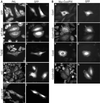
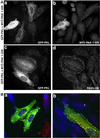


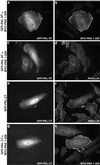
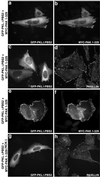
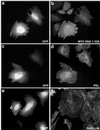
References
-
- Aplin AE, Howe AK, Juliano RL. Cell adhesion molecules, signal transduction and cell growth [see comments] Curr Opin Cell Biol. 1999;11:737–744. - PubMed
-
- Bagrodia S, Cerione RA. PAK to the future. Trends Cell Biol. 1999;9:350–355. - PubMed
-
- Bagrodia S, Taylor SJ, Jordon KA, Van Aelst L, Cerione RA. A novel regulator of p21-activated kinases. J Biol Chem. 1998;273:23633–23636. - PubMed
Publication types
MeSH terms
Substances
Grants and funding
LinkOut - more resources
Full Text Sources
Research Materials
Miscellaneous

